Denmark is culling its population of up to 17 million minks after a mutated COVID-19 strain was discovered in sick animals in fur farms across the country's northern region.
The mutated strain was found in five different Danish mink farms, and 12 people were found to be infected with the new coronavirus mutation. If this fresh strain of the virus were to spread to humans, Danish authorities say, it could pose a risk to the effectiveness of any possible future vaccine.
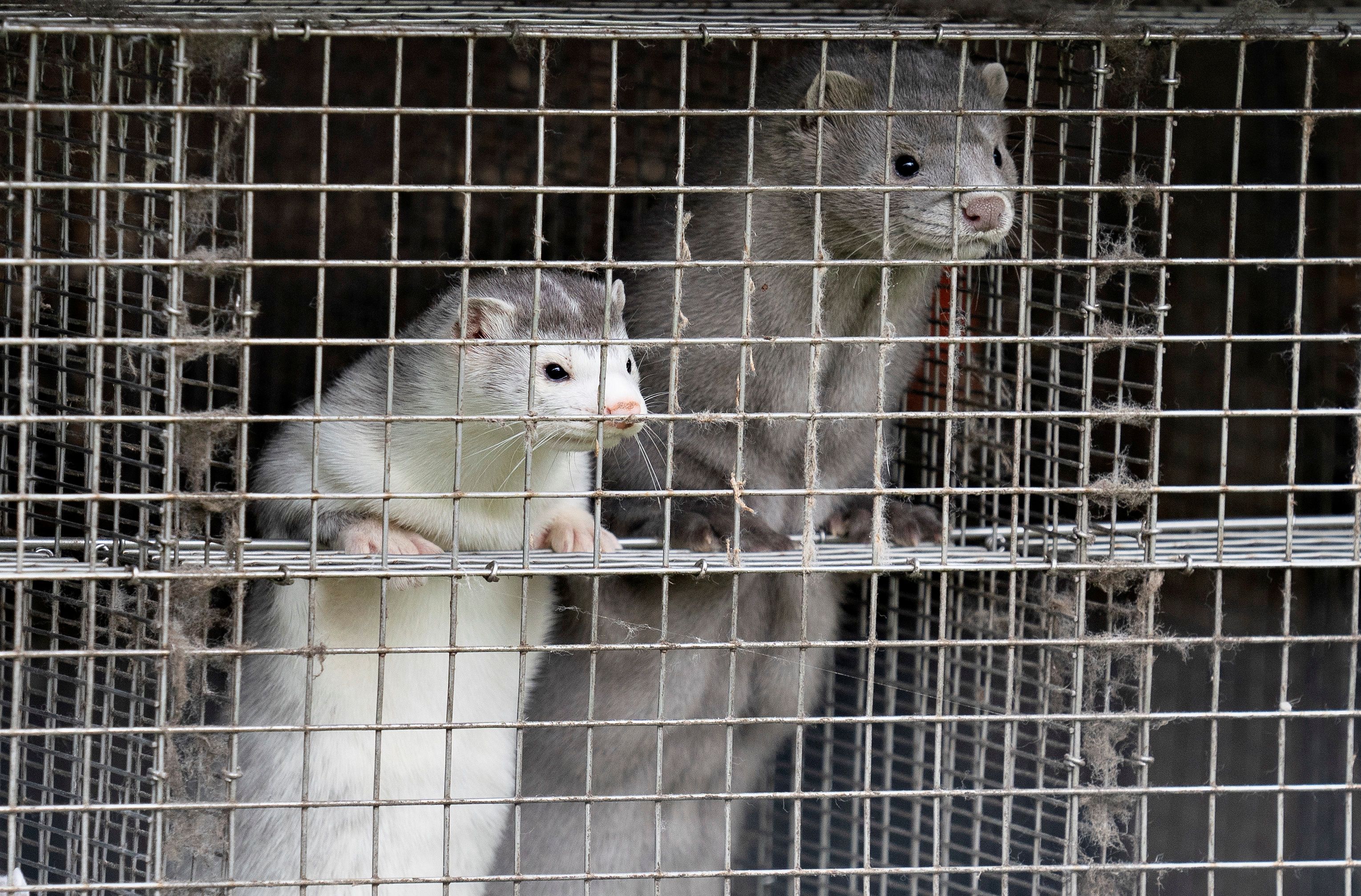
Caged minks look on after police officers arrived at Thorbjorn Jepsen's mink farm in Gjoel, Denmark. /Henning Bagger/Ritzau Scanpix/via Reuters
Caged minks look on after police officers arrived at Thorbjorn Jepsen's mink farm in Gjoel, Denmark. /Henning Bagger/Ritzau Scanpix/via Reuters
"We have a great responsibility towards our own population, but with the mutation that has now been found, we have an even greater responsibility for the rest of the world as well," Prime Minister Mette Frederiksen said in a news conference on Wednesday.
As reported by Associated Press, Danish health minister Magnus Heunicke said half of the 783 COVID-19 cases in the northern part of the country were related to mink, suggesting the spillover of the virus from mink to humans is more common than experts initially thought. According to the experts it is likely that the minks were initially infected by farm workers and they went on to reinfect people.
Due to the discovery of a mutated infection in mink ... resolute action is needed. It is necessary to kill all minks.
- Mette Frederiksen, Denmark's prime minister
Denmark is the world's largest producer of mink pelts. Every year, the country produces 19 million skins, which brings the country $1.3 billion in exports. The killing of the country's entire population will cost Denmark $800 million and will have heavy repercussions on mink farmers, who have been promised full compensation by the government.
Denmark started culling mink in June in a first attempt to prevent the spread of COVID-19 to humans, but the decision to kill all these animals in the country is now seen as unavoidable to the Danish government.
"The worst-case scenario is a new pandemic, starting all over again out of Denmark," said Kare Molbak, director at the State Serum Institute.

Minks belongs to the Mustelidae family, the same as weasels, badgers and wolverines. /Essere Animali
Minks belongs to the Mustelidae family, the same as weasels, badgers and wolverines. /Essere Animali
But how do you go about the business of killing 17 million minks?
Denmark is bringing in the army, the police and the home guard to speed up the process, but still, according to the police, the cull could take several days.
Unlike animals farmed for food, which are usually stunned before slaughter, minks are normally euthanized with gas.
"The law allows farmers to use different methods to kill the minks, but usually they choose to use carbon monoxide and dioxide," explains Simone Montuschi, president of the Italian animal welfare organization Essere Animali.
For context, gas killing is also used for the mass culling of poultry during a disease outbreak. But this method, which should make animals unconscious in 30 seconds, is not considered very humane in the case of minks by most veterinarians.
"Several studies have shown perplexity over this method, since it causes prolonged suffering in minks, which are semi-aquatic animals, and thus are used to holding their breath for a long time," says Montuschi.
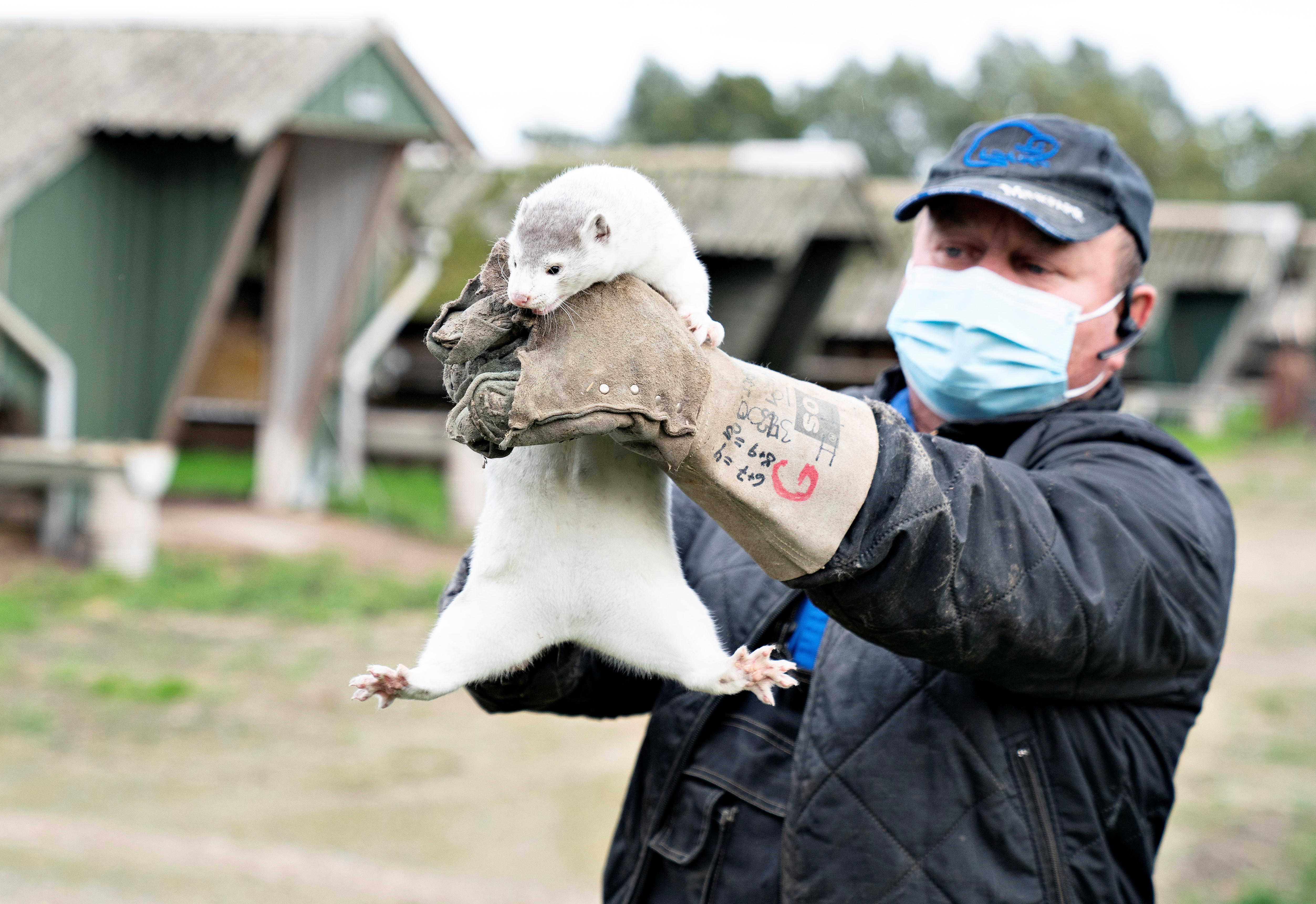
A fur farmer holds up a mink at his farm in Gjoel, Denmark. /Henning Bagger/Ritzau Scanpix/via Reuters
A fur farmer holds up a mink at his farm in Gjoel, Denmark. /Henning Bagger/Ritzau Scanpix/via Reuters
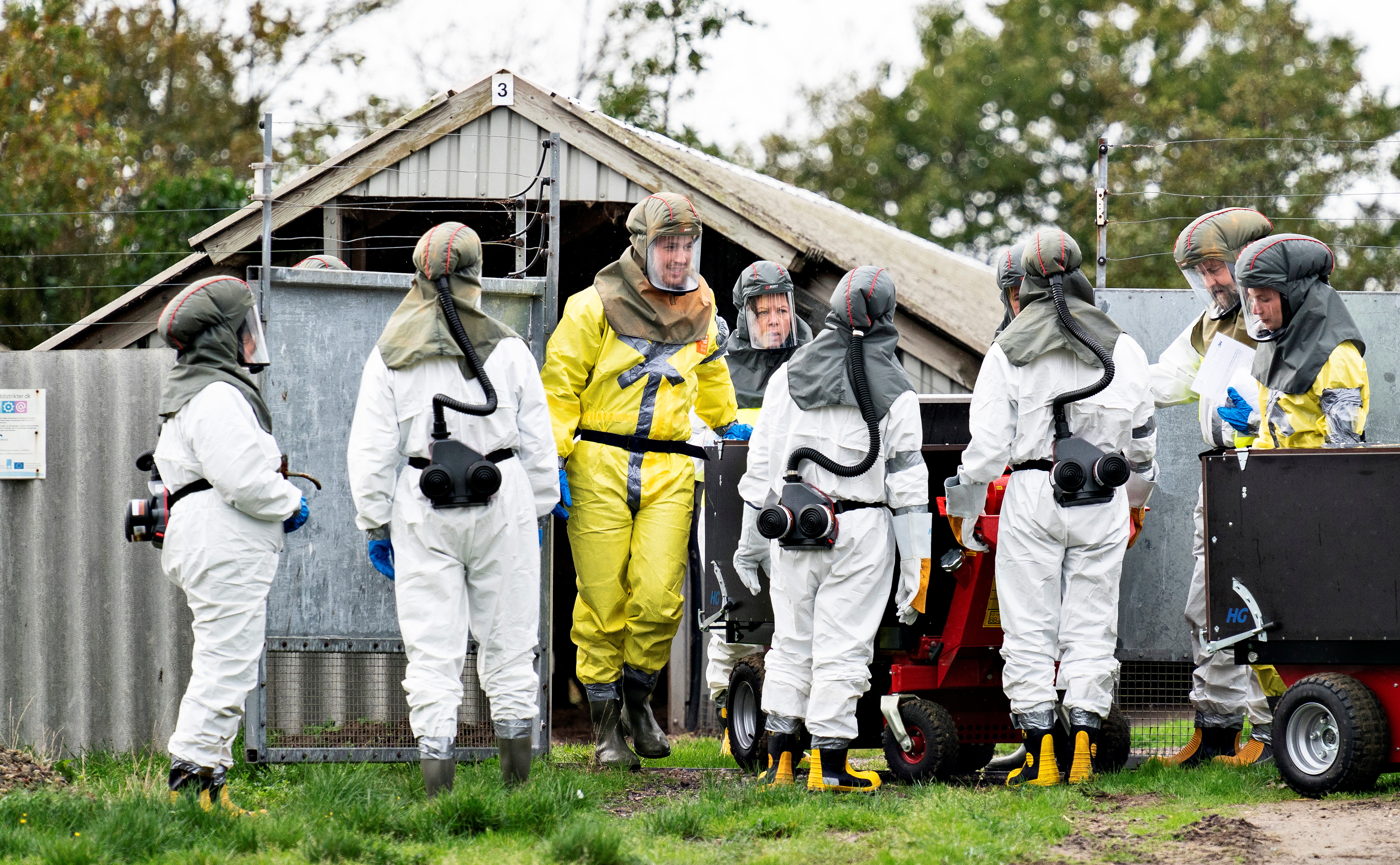
Employees from the Danish Veterinary and Food Administration and the Danish Emergency Management Agency in protective equipment at a mink farm in Gjoel, Denmark. /Ritzau Scanpix/Henning Bagger via Reuters
Employees from the Danish Veterinary and Food Administration and the Danish Emergency Management Agency in protective equipment at a mink farm in Gjoel, Denmark. /Ritzau Scanpix/Henning Bagger via Reuters
Gassing animals is a standard industry practice, despite the fact that many variables can come into play to compromise the effectiveness of the culling, such as the concentration of gas, the flow rate, and the size of the chamber.
In cases of disease outbreaks, such as the COVID-19 one, using gas is considered the safest option, because the skin of the animals remains unbroken, avoiding the release of contaminated bodily fluids into the environment.
In normal circumstances in the fur industry, once the fur is removed, the bodies of the mink are put to use for different purposes. Their fat is rendered into mink oil, which is used in cosmetics and leather products, and the rest of their carcass is composted for organic fertilizers.
In the case of diseased animals, the bodies are usually disposed of via burial, landfilling, incineration or composting. But these methods are not always equally feasible. With huge quantities of carcasses, local rendering plants and landfills won't always have the capacity to process such numbers. Transport of the bodies to incineration facilities involves some level of biosecurity hazard and burial depends on the availability of enough land space to contain the bodies.

It is not clear which of these methods Denmark will follow to dispose of the 17 million minks, but the Netherlands was known to have used disposal plants when culling 10,000 sick minks in June.
The culling of so many animals is a tragedy for animal welfare activists, but many believe and hope this could be a chance to step away from the business altogether.
Are minks especially susceptible to COVID-19?
The first cases of COVID-19 outbreaks at mink farms were discovered in the Netherlands in May, when two farm workers tested positive for the virus and were suspected of being infected by the animals.
The World Health Organization (WHO) said at the time that the infections could have been the "first-known cases of animal-to-human transmission" since the beginning of the COVID-19 outbreak.
The Netherlands culled a total of 10,000 sick minks within the following months.
In July, Spain culled 100,000 minks after discovering that 87 percent of the animals in farms were infected. Cases of infected minks were also found in Italian fur farms.
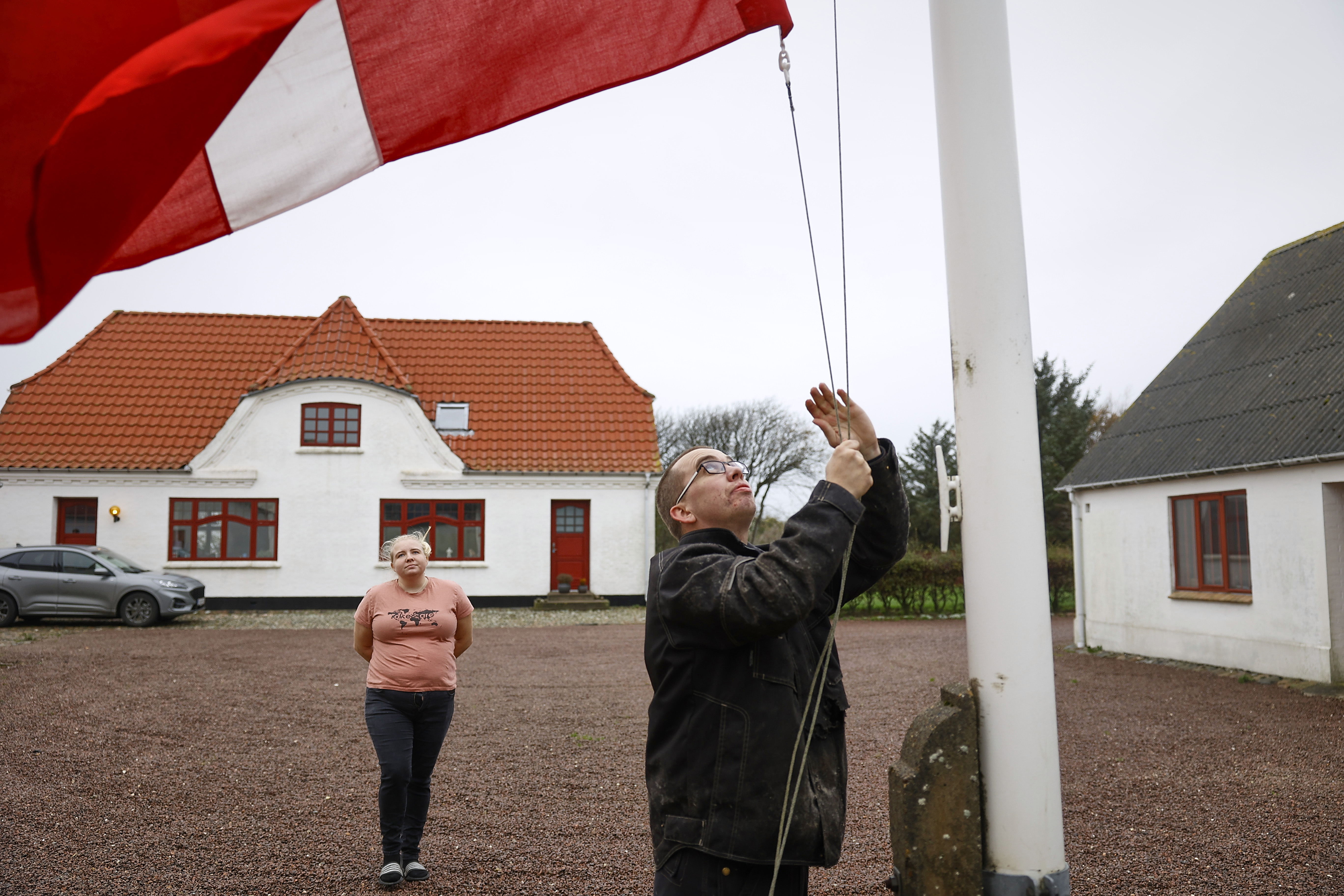
Peter and Trine Brinkmann Nielsen put their flag to half-mast on November 5, 2020 at their mink farm in northern Denmark, as they will have to cull their 250,000 animals. /Claus Bjoern Larsen/Ritzau Scanpix/AFP
Peter and Trine Brinkmann Nielsen put their flag to half-mast on November 5, 2020 at their mink farm in northern Denmark, as they will have to cull their 250,000 animals. /Claus Bjoern Larsen/Ritzau Scanpix/AFP
Mink are affected by COVID-19 in similar ways to humans. The virus causes respiratory problems that tend to be worse in older individuals. Other animals that can be infected with COVID-19 are dogs, ferrets, cats, hamsters, rabbits and fruit bats.
But are mink more susceptible to COVID-19 than other animals?
"Mink farms, like factory farms, provide the ideal environment for a mutating virus," said Justine Butler, researcher at Viva! a leading vegan campaigning charity in the UK.
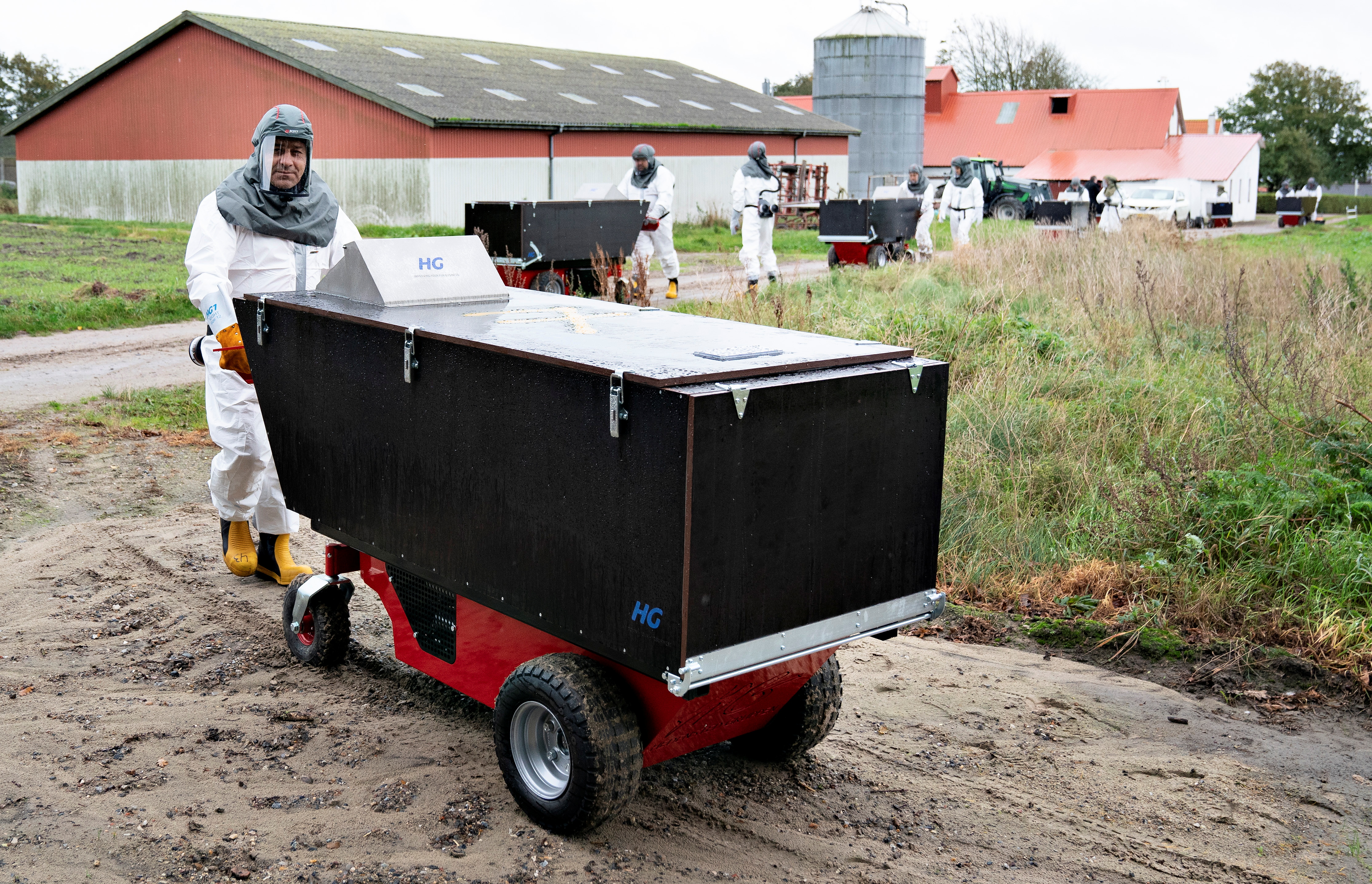
Employees from the Danish Veterinary and Food Administration and the Danish Emergency Management Agency in protective equipment at a mink farm in Gjoel, Denmark. /Ritzau Scanpix/Henning Bagger via Reuters
Employees from the Danish Veterinary and Food Administration and the Danish Emergency Management Agency in protective equipment at a mink farm in Gjoel, Denmark. /Ritzau Scanpix/Henning Bagger via Reuters
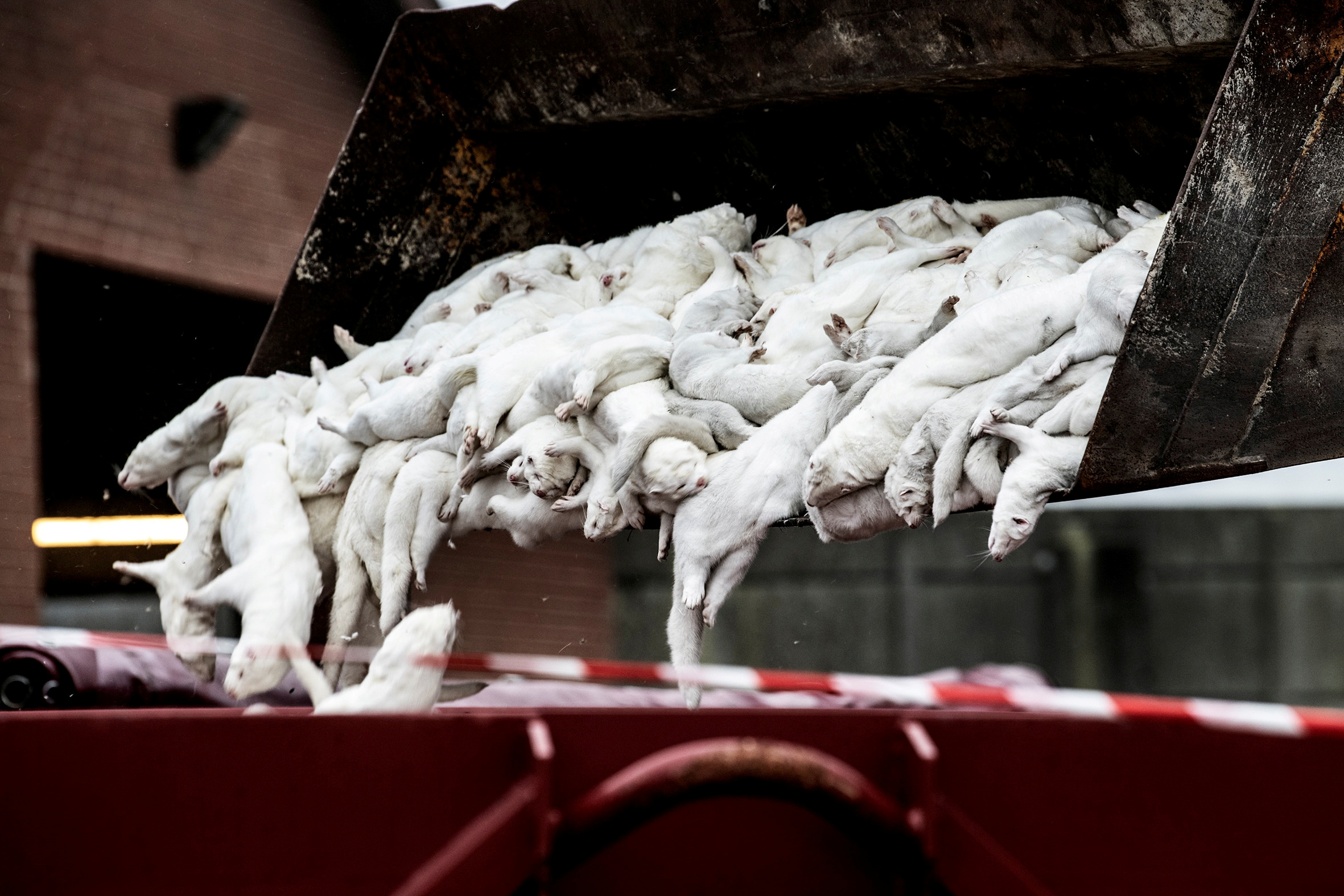
Mink carcasses are disposed of at a farm in Farre in the southern part of Jutland, Denmark. /Ritzau Scanpix/Mette Moerk via Reuters
Mink carcasses are disposed of at a farm in Farre in the southern part of Jutland, Denmark. /Ritzau Scanpix/Mette Moerk via Reuters
The animals are often housed in small wire cages, in relatively high densities. The European fur industry has recently launched WelFur, a project that claims to ensure a high level of animal welfare on fur farms for three species of animals – mink, silver foxes and blue foxes.
But fur farming is entirely banned in several countries, including the UK, Austria, Croatia, Czechia, Luxembourg and Belgium. In other countries, such as Germany and Switzerland, it is so strictly regulated that it is effectively impossible. In most other European countries debates are ongoing about phasing out and banning the practice, supported by strong public campaigns against killing animals for luxury products.
COVID-19 might just speed up this process.